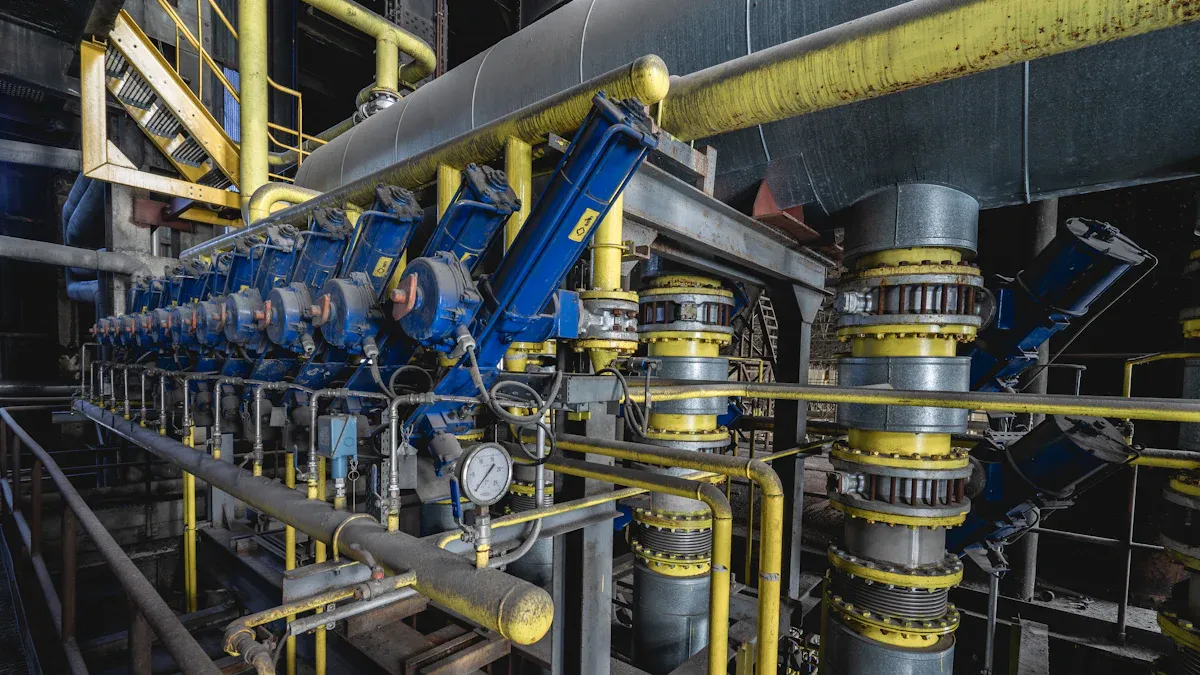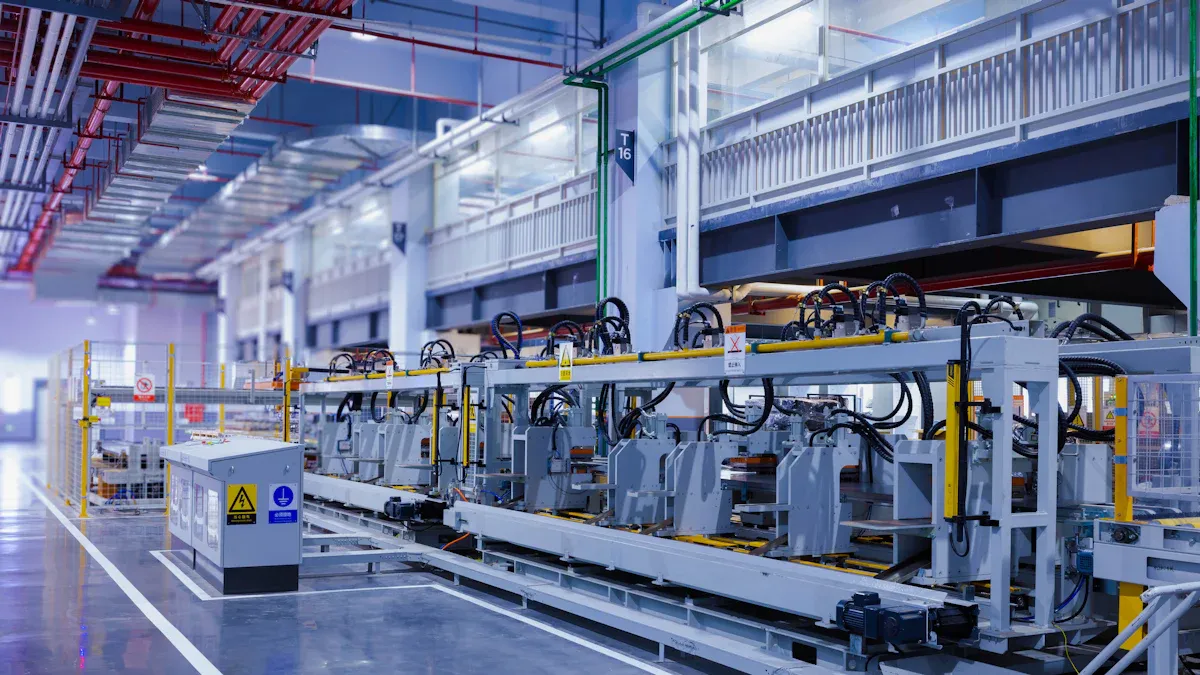
Chemical processing equipment faces constant exposure to harsh environments. TAC Coating shields these surfaces with advanced resistance to corrosion, wear, and chemical damage. You gain a longer-lasting solution that reduces maintenance downtime and cuts operational costs. Whether through sic coating or cvd coating, this technology ensures equipment durability and better performance.
Durability matters. With TAC Coating, your equipment stays reliable, even under extreme conditions.
Key Takeaways
- TAC Coating keeps chemical equipment safe from rust, damage, and wear. This helps the equipment last longer.
- Using TAC Coating lowers repair costs and work delays. It makes operations smoother and saves resources.
- Picking the right TAC Coating improves how equipment works in many industries. It also helps protect the environment.
Understanding TAC Coating
What is TAC Coating?
TAC Coating is a specialized protective layer designed to enhance the durability of equipment used in chemical processing. It acts as a shield, preventing damage caused by corrosive substances, extreme temperatures, and mechanical wear. This coating is engineered to withstand the harshest industrial environments, ensuring your equipment remains functional and reliable over time.
You can think of TAC Coating as a safeguard for your machinery. It creates a barrier that resists chemical reactions, reducing the risk of corrosion and degradation. By applying this coating, you extend the lifespan of your equipment and minimize the need for frequent repairs or replacements.
Key Properties of TAC Coating
TAC Coating stands out due to its unique properties that make it ideal for chemical processing applications. Here are some of its key features:
- Corrosion Resistance: TAC Coating prevents chemical reactions between the equipment surface and corrosive substances, ensuring long-term protection.
- High Wear Resistance: The coating reduces surface wear caused by friction, abrasion, or impact, keeping your equipment in excellent condition.
- Thermal Stability: It maintains its protective qualities even under extreme temperatures, making it suitable for high-heat environments.
- Chemical Inertness: TAC Coating resists chemical attacks, ensuring that your equipment remains unaffected by aggressive solvents or acids.
- Adhesion Strength: The coating adheres firmly to various surfaces, providing consistent protection across different types of equipment.
These properties make TAC Coating a reliable solution for industries that demand durability and efficiency. By choosing this coating, you ensure your equipment can handle challenging conditions without compromising performance.
Benefits of TAC Coating in Chemical Processing

Enhanced Durability and Protection
TAC Coating provides unmatched durability for chemical processing equipment. It forms a robust barrier that shields surfaces from corrosion, wear, and chemical damage. This protection ensures your equipment can withstand harsh environments without losing functionality.
You can rely on TAC Coating to extend the lifespan of your machinery. Its resistance to extreme temperatures and aggressive chemicals prevents premature degradation. This means your equipment stays operational for longer periods, even under demanding conditions.
Tip: Investing in TAC Coating reduces the risk of unexpected equipment failures. This ensures smoother operations and fewer interruptions in your production process.
Cost Savings and Efficiency
By using TAC Coating, you significantly lower maintenance and repair costs. The protective layer minimizes wear and tear, reducing the need for frequent servicing. This translates to fewer expenses over time and better allocation of resources.
Improved efficiency is another key benefit. Equipment coated with TAC Coating operates at peak performance for longer durations. This leads to consistent output and reduced downtime. You also save on replacement costs since the coating extends the life of your machinery.
- Key Cost-Saving Benefits of TAC Coating:
- Reduced maintenance frequency.
- Lower repair expenses.
- Extended equipment lifespan.
- Minimized production downtime.
Environmental Sustainability
TAC Coating supports sustainability by reducing waste and conserving resources. When your equipment lasts longer, you generate less industrial waste. This contributes to a cleaner environment and aligns with eco-friendly practices.
The coating’s chemical resistance also prevents harmful substances from leaching into the environment. This ensures safer operations and reduces the ecological impact of your processes.
🌱 Eco-Friendly Advantage: TAC Coating helps you achieve your sustainability goals while maintaining high performance in chemical processing.
By choosing TAC Coating, you not only protect your equipment but also contribute to a greener future. This makes it a smart choice for businesses aiming to balance efficiency with environmental responsibility.
Applications and Types of TAC Coatings

Types of TAC Coatings
TAC Coatings come in various types, each designed to meet specific industrial needs. The most common types include:
- Thermal Spray Coatings: These coatings are applied by heating materials and spraying them onto surfaces. They provide excellent resistance to wear and corrosion.
- Chemical Vapor Deposition (CVD) Coatings: This type involves depositing a thin, durable layer of material onto equipment through chemical reactions. It offers superior adhesion and uniform coverage.
- Electroplated Coatings: These coatings use an electrochemical process to create a protective layer. They are ideal for enhancing surface hardness and corrosion resistance.
- Polymer-Based Coatings: These coatings use advanced polymers to create a flexible yet durable barrier. They are particularly effective against chemical attacks.
Each type of TAC Coating is tailored to specific challenges, ensuring optimal performance in demanding environments.
Industry Applications of TAC Coatings
TAC Coatings play a vital role in various industries. In the chemical processing sector, they protect reactors, storage tanks, and pipelines from corrosive substances. The oil and gas industry uses these coatings to safeguard drilling equipment and pipelines exposed to harsh conditions.
In the pharmaceutical industry, TAC Coatings ensure that processing equipment remains uncontaminated and resistant to aggressive cleaning agents. Food processing facilities also benefit from these coatings, as they maintain hygiene and prevent chemical reactions with food products.
Note: TAC Coatings are essential for industries that demand durability, efficiency, and safety. By choosing the right type, you can enhance the performance and lifespan of your equipment.
TAC Coating strengthens your equipment, lowers costs, and promotes sustainability. It protects machinery from damage, ensuring long-term reliability. By reducing waste and maintenance needs, it supports eco-friendly practices. Explore TAC Coating options to find the best fit for your industry. Consult experts to tailor solutions that maximize durability and efficiency.
FAQ
What industries benefit the most from TAC Coatings?
Industries like chemical processing, oil and gas, pharmaceuticals, and food processing gain the most. These coatings protect equipment from corrosion, wear, and chemical damage, ensuring durability and efficiency.
How do I choose the right type of TAC Coating?
Consult experts to assess your equipment’s needs. Factors like operating conditions, exposure to chemicals, and temperature requirements help determine the most suitable coating type.
Tip: Always consider long-term benefits like reduced maintenance and extended equipment lifespan when selecting a coating.
Are TAC Coatings environmentally friendly?
Yes, TAC Coatings reduce waste by extending equipment life. Their chemical resistance prevents harmful substances from leaching, supporting eco-friendly practices and sustainability goals. 🌱


